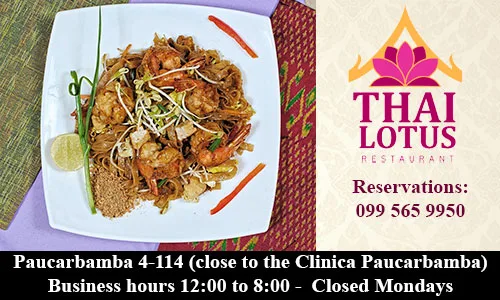Secret to wellness and weight control, Part 3
By Rob Gray
In Part 1 of The secret to wellness and weight control, I explored the concept that the human body evolved to eat the foods that grew around them and came to recognize these “Whole Foods” as human foods and assimilate and effectively use them to provide both wellness and a healthy weight.

Rob Gray
In Part 2, I presented examples of “What not to Eat” (“Fractured Foods”), “What to Eat” (“Whole Foods”), a general meal plan, helpful strategies, and finally a simple test you can do yourself to eliminate foods your body cannot properly regulate.
Now in Part 3, we are going to further examine the set of foods you eat and see if any of those foods are causing symptoms that compromise your health and should therefore be eliminated from your diet.
Through many conversations I’ve had with others, I’ve learned that culture plays a major role in what foods they choose to eat. Typically, children learn from their parents and eat what is put on their plate. These often become habits at least until their teen years when peer pressure may move them in a new direction. College, young adulthood, where you live, having your own children, age and income level can also influence dietary choices. One phrase I hear a lot these days goes something like, “I eat instinctually. I let my body choose what I eat.” Instinctual eating, however, can only help when eating “Whole Foods.” “Fractured Foods” can fool your “instincts” and, as discussed in Part 1, take advantage of human’s genetic history of starvation.
Other popular reasons for dietary change include a recommendation from a family member, friend, co-worker, etc. who tell you that they are on this great diet that you must try. Also, you might see something on TV or a social media site (often featuring a “hot” celebrity) about a new discovery based on the latest “science” or product that is guaranteed to help you lose weight fast. Unfortunately, there is no one (including me) that can tell you what foods you should or shouldn’t eat. If your wellness level is high, (good energy with blood pressure, resting heart rate, and cholesterol in the normal range and no smoking), and your weight is within the normal range, then you’re probably on the right track.
you what foods you should or shouldn’t eat. If your wellness level is high, (good energy with blood pressure, resting heart rate, and cholesterol in the normal range and no smoking), and your weight is within the normal range, then you’re probably on the right track.
On the other hand, you may knowingly or unknowingly have symptoms that affect your wellness level and contribute to chronic illness. What kind of symptoms are we talking about? We will skip over the serious allergic reactions (body will react with an IgE immune system response to a pin prick test) as you would likely have identified these with your medical practitioner. What often remain undiagnosed or overlooked are food intolerances or medically speaking “non-allergic food hypersensitivity” that can elicit an IgG immune system response which does not generally respond to a pin prick test, has reactions that can be delayed from hours to days after food consumption, and are therefore more difficult to diagnose and isolate the cause.
 One of the more interesting aspects of food intolerances is that they are often connected to the foods we crave or feel we could not live without. There are many theories as to why this appears to be true, (and there may be multiple explanations, both physiologically and psychologically that are beyond the scope of this article), but it is clear that part of the body is getting some kind of positive reinforcement, while another part of the body is experiencing what can be devastating symptoms. Further, like drugs, when the offending food is not regularly consumed, there can be withdrawal symptoms that are hard to resist. So, keep this in mind. You may already know what foods are not a good match for your body.
One of the more interesting aspects of food intolerances is that they are often connected to the foods we crave or feel we could not live without. There are many theories as to why this appears to be true, (and there may be multiple explanations, both physiologically and psychologically that are beyond the scope of this article), but it is clear that part of the body is getting some kind of positive reinforcement, while another part of the body is experiencing what can be devastating symptoms. Further, like drugs, when the offending food is not regularly consumed, there can be withdrawal symptoms that are hard to resist. So, keep this in mind. You may already know what foods are not a good match for your body.
The Food Suspects
Although one can have a Food Intolerance to just about any food, the eight most common foods that elicit the large majority of immune responses are:
 In addition, researchers have found food intolerances with yeast, alcohol and histamine rich foods which would include anything fermented, bread, cheese, soy sauce, vinegar, pickles and cured meats.
In addition, researchers have found food intolerances with yeast, alcohol and histamine rich foods which would include anything fermented, bread, cheese, soy sauce, vinegar, pickles and cured meats.
The Symptoms
Symptoms from food intolerances could be any of the following:
– Gastrointestinal: Abdominal pain, Acid reflux, Bloating, Constipation, Cramps, Diarrhea, IBS, Nausea, Swelling, Vomiting, Weight loss
– Breathing/Sinuses: Asthma, Hay fever, Runny nose, Sinusitis, Wheezing
– Tiredness: Brain Fog, CFS, Fatigue, Lethargy, Night sweats
– Skin: Dark circles under eyes, Eczema, Hives, Rashes, Skin problems
– Pain: Aches and pains, Arthritis, Fibromyalgia, Headaches, Joint pain, Migraine, Tension
(Please note that I am not covering fluid retention in this article, but plan to cover this topic in a separate article.)
 As you can see, most of these symptoms have pain associated with them or can be seen or felt and are relatively easy to recognize. However, symptoms such as brain fog (lack of clarity) and tiredness (lack of energy) can be more subtle to the point that you become accustomed to your condition and believe it is normal. If you have any of the above symptoms that you can see or feel, or think you might suffer from brain fog or fatigue, it may be very helpful to follow the procedure in the section below.
As you can see, most of these symptoms have pain associated with them or can be seen or felt and are relatively easy to recognize. However, symptoms such as brain fog (lack of clarity) and tiredness (lack of energy) can be more subtle to the point that you become accustomed to your condition and believe it is normal. If you have any of the above symptoms that you can see or feel, or think you might suffer from brain fog or fatigue, it may be very helpful to follow the procedure in the section below.
Another reason to use this procedure is if you are having difficulty controlling your weight. It is not uncommon for the foods that we crave to both cause serious symptoms and at the same time make it difficult to control weight gain. There are so many diets, gadgets and systems out there for helping people “track and control” their weight, but in most cases, these are just treating the symptoms (excess weight) and not identifying or removing the cause (which is why these solutions mostly fail in the end). In fact, many of the diet plans advertise that “You can still eat all of your favorite foods.” What if your favorite food is causing both serious symptoms and making weight control impossible?
So, what do you do if you have one or more of these symptoms? Certainly there could be other explanations such as other lifestyle choices or environmental toxins, but the cause may very well be Food Intolerance (especially if you have any of the gastrointestinal symptoms.)
 The “Elimination Diet” Test
The “Elimination Diet” Test
In my opinion, the best way to know whether a food or group of foods are causing or contributing to one or more of the symptoms you’ve identified, is to do an “elimination diet” test, removing the foods from your diet for a period of time and seeing if there is a corresponding absence or reduction in the symptoms. Following an “elimination diet” for a few weeks could be the most profound dietary change you’ll ever make and feel nothing short of miraculous. To precisely determine the food(s) causing the symptom(s), use the following procedure.
1. Determine what foods should be tested (eliminated from your diet initially for three weeks). Select five groups from the following list of ten food groups that include the foods you eat most regularly, crave or cannot imagine giving up. (You can repeat the test again with the other five food groups later.)
A. Dairy Products and Milk Substitutes
B. Eggs
C. Beans, Peas and Soy and other legumes like Peanuts
D. Nightshade Vegetables (tomatoes, peppers, eggplant, potatoes), Citrus Fruits
E. Cured, Smoked, Salt-preserved Meats (bacon, sausage, ham, etc.)
F. Grains (wheat, rye, barley, oats, rice, spelt, corn, etc.)
G. Nuts and Seeds
H. Fish and Shellfish
I. Alcohol, caffeine, chocolate, Catsup, Mustard and other condiments
J. Sweeteners like white or brown sugar, honey, corn syrup, sweetened desserts
From my experience, groups A (Dairy) and F (Grains) are most often responsible for the symptoms you have identified. Therefore, if you eat foods from these groups regularly (and especially if you crave them), they should be selected for the test. For example, you might select the groups A, C, F, I, J because you eat lots of dairy products and soy, and crave eating bread, pizza, chocolate, and sugared snacks. (If for any reason you regularly consume or crave a food that does not fit into any of the groups above, make sure you also include that food in the elimination diet test.)
2. Plan a strategy for how you will eat, eliminating the five food groups you have selected for three weeks. Remove these food groups from your kitchen and buy foods in different groups that can take their place. Foods like milk, eggs, soy, grains, sugars, etc. are especially difficult to eliminate as they are found in all kinds of processed foods. Consuming even small amounts of these foods can invalidate the test results, so make sure you know ALL of the ingredients in everything you eat during the test. Choosing single-ingredient foods (fruits, vegetables, roots like sweet potatoes, untreated meats, etc.) make it much easier to administer the test. Of course you can mix foods together and prepare meals. But you should be choosing what is mixed/prepared instead of the factory/processing plant where all kinds of chemicals and non-food stuffs get added into the final product.
3. Start the elimination diet and make sure to keep a diary of each meal, what foods were consumed, and any changes in symptoms over the course of the “Elimination Diet” test.
4. After three weeks, it is time to reintroduce the foods that were eliminated from your diet. This requires patience and some precision. Only one food may be reintroduced in one day. After that day you must remove the food again and wait for two days, watching for symptoms, before reintroducing another food. Keep careful notes on what food was reintroduced and any symptoms that appeared during the day the food was consumed and the following two days as it can take 24-48 hours or more for symptoms to appear.
For example, if you add back the Dairy Products group, you might consume milk, plain cheese, yogurt and/or cottage cheese (nothing with sweeteners or other eliminated foods, so that you are only testing milk and not multiple foods) making sure you eat plenty of it on that day and then return to your elimination diet for two days. Watch for any symptoms to appear and record your observations in your diary. You may then proceed to test a second food, for example, Soy from the bean group for one day, then again return to your elimination diet and wait two days for symptoms and record your findings in your diary. Continue this process until you have individually tested all the foods you eat in all of the five food groups you eliminated. Note that with groups like grains, which have multiple types of food, only reintroduce one type of grain at a time. (Do not test using a seven-grain bread as you will not know which grains are causing which symptoms.)
5. After you have completed testing all of the different foods in each of the five food groups, examine the results and determine for yourself which foods are responsible for what symptoms.
6. Now, after removing the foods from your diet that you determined were responsible for symptoms from the first five food groups, repeat these five steps again with the remaining untested five food groups and record those results in your diary. Upon completion of all ten food groups, you will have all of the information you need to determine which foods are responsible for what symptoms. Good Job!
Quantity Matters
I am often asked, “Does this mean that if I discover a food causing a symptom, I can never have it again?” And, of course, the answer is that it is up to you. I would recommend you listen to your own body for clues. For serious symptoms, and especially with foods that you crave, your body is telling you it is probably best to avoid that food, especially if the symptoms last or cause other issues. You may be compromising your health.
 On the other hand, you may find that if you adjust your portion size to be smaller, and consume the food, say, only once a week, you might find little or no symptoms. Then the question becomes, can you stick to eating a smaller portion occasionally or do you start eating a larger portion of the food more often? I think it is safe to say it is best to avoid addictive foods. Like smoking, drugs and alcohol, they can seriously harm your health and ultimately destroy your life.
On the other hand, you may find that if you adjust your portion size to be smaller, and consume the food, say, only once a week, you might find little or no symptoms. Then the question becomes, can you stick to eating a smaller portion occasionally or do you start eating a larger portion of the food more often? I think it is safe to say it is best to avoid addictive foods. Like smoking, drugs and alcohol, they can seriously harm your health and ultimately destroy your life.
Some Final Thoughts
When I was much younger, I remember reading a book by a doctor (too long ago to remember the author’s name) that suggested that of the three primary kinds of animal products, meat, eggs and milk, chances are that your body would do better with two of them than the third one which he recommended you to remove from your diet. The book introduced the concept of elimination to me and over the years I have found this to be very helpful to my family and a number of other people as well.
 I also remember learning that children generally have more allergies than adults, but that as people age, they develop more food intolerances. It can be surprising when you find out that a food you’ve eaten your entire life is now causing serious symptoms. Believe it. Some estimate that 45% of elderly individuals are challenged by food intolerances.
I also remember learning that children generally have more allergies than adults, but that as people age, they develop more food intolerances. It can be surprising when you find out that a food you’ve eaten your entire life is now causing serious symptoms. Believe it. Some estimate that 45% of elderly individuals are challenged by food intolerances.
Finally, when my kids started to have food issues, I observed serious symptoms with both animal and plant foods. The elimination diet test was one of the most useful tools that we used to help us separate foods that could be safely consumed from those that needed to be eliminated. And what a difference it made! I hope after reading this article, if you or a loved one are experiencing symptoms, you can see for yourself what a difference the elimination diet test can make.
_________________
Rob Gray runs the Gran Roca Project, (www.granroca.net), a sustainable commercial permaculture farm on a landmark property in the Yunguilla Valley, southwest of Cuenca. High quality tree fruits, berries, and a large variety of both native and heirloom vegetables and herbs are produced with animals also integrated into the mix.


















